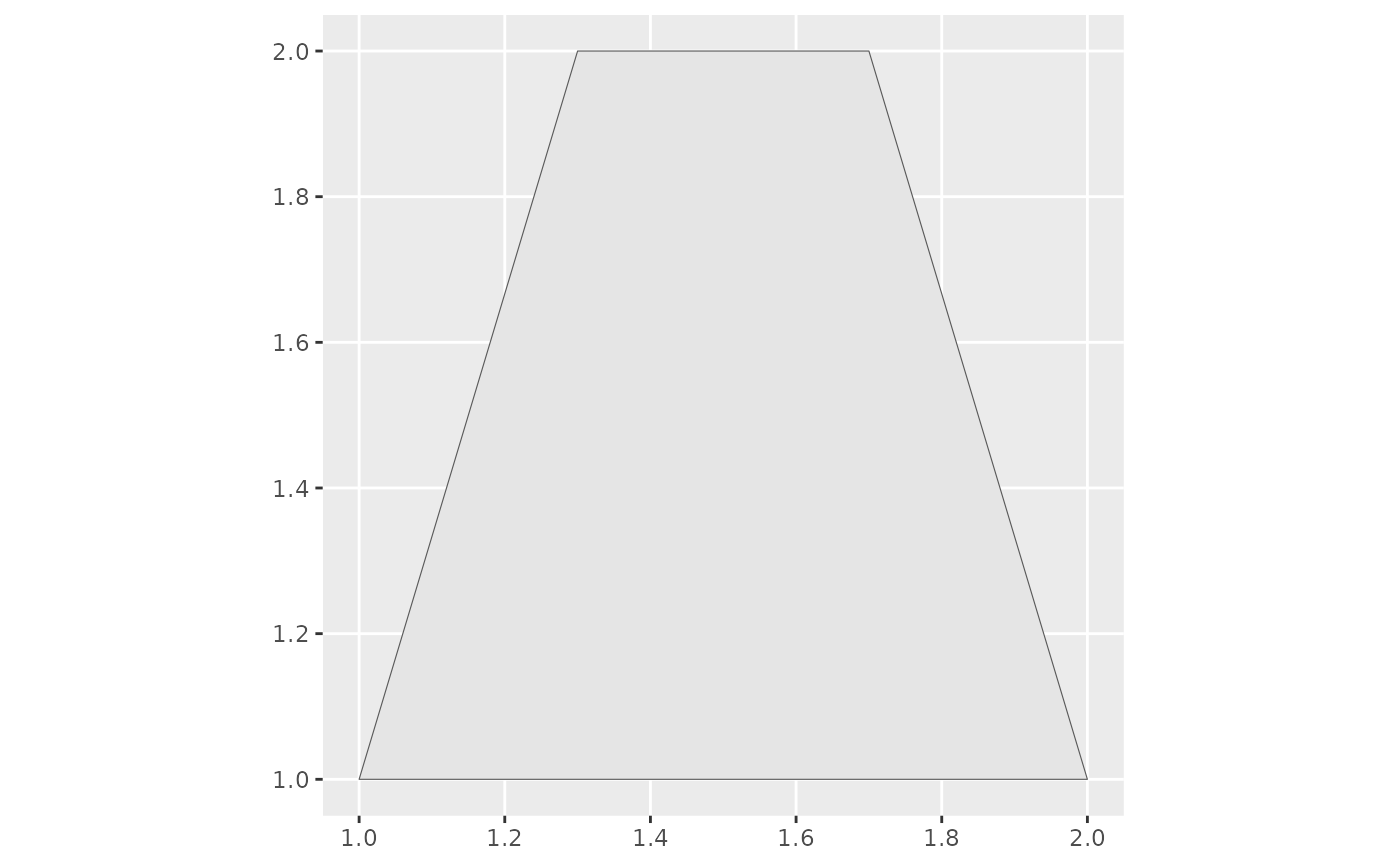A polygon can be described as a sequence of points defining the polygon's
boundary. When given such a sequence (anti clockwise!) this function creates
a SpatialPolygonsDataFrame or sf holding the polygon decribed. By
default, the first two columns of data are assumed to define the x and y
coordinates of the points. This behaviour can be changed using the cols
parameter, which points out the names of the columns holding the coordinates.
The coordinate reference system of the resulting spatial polygon can be set
via the crs parameter. Posterior conversion to a different CRS is supported
using the to.crs parameter.
Arguments
- data
A data.frame of points describing the boundary of the polygon (unique points, no holes)
- cols
Column names of the x and y coordinates within the data
- crs
Coordinate reference system of the points
- to.crs
Coordinate reference system for the
SpatialLines/sfouput.- format
Format of the output object. Either "sp" (default) or "sf"
